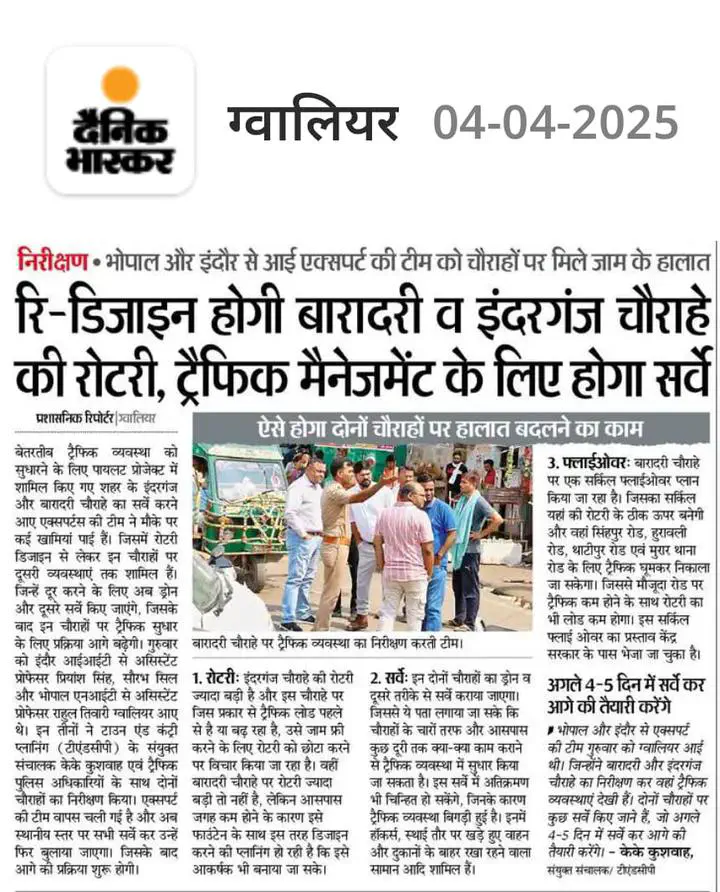Redesigning Gwalior's Key Intersections: A Step Towards Smarter Urban Traffic Management
From Visit to Gwalior, Madhya Pradesh on April 4, 2025

In an important initiative to tackle the worsening traffic congestion in Gwalior, experts from Bhopal and Indore have initiated a comprehensive inspection and redesign process of two critical junctions: Baradari and Inderganj Chauraha. The teams, part of the Smart City and AIIMS projects, are working towards implementing a more efficient and sustainable traffic management system.
The traffic survey, led by urban planners and traffic experts, will help prepare a detailed redesign plan aimed at easing vehicular movement and improving overall traffic discipline in the city.
Key Points of the Redesign Initiative:
1. Redesigning the Rotaries
The rotaries at Inderganj and Baradari are known bottlenecks, especially during peak hours. Vehicles from multiple directions converge here, leading to severe delays and traffic snarls. The redesigned layout will focus on smoother vehicle flow, with proper channelization of traffic and potential removal of unnecessary obstacles within the circle.
2. Comprehensive Surveys
A detailed survey is being planned, which will include drone mapping of traffic patterns, manual and video-based vehicle counts, and pedestrian movement studies. This data will be analyzed to understand bottlenecks, vehicle volumes, and peak hour dynamics, forming the foundation of the new traffic plan.
3. Flyover at Baradari
Baradari Chauraha is set to see major changes, including the proposed construction of a flyover. The elevated structure will allow continuous movement of traffic from the hospital side to Jhansi Road, bypassing the congested circle below. This is expected to significantly reduce delays and accidents.
What’s Next?
The survey will begin in the next 4-5 days, and based on the results, design proposals will be developed. These will include options like geometric redesign, signalization plans, better signages, and segregation of different traffic modes.
Teams from Indore and Bhopal—including experts from IITs and urban planning consultants—are also involved in this project. With their inputs, a comprehensive and future-ready traffic management system is envisioned for Gwalior.
Conclusion
Initiatives like this highlight the importance of data-driven urban planning and the need for continuous infrastructure updates in rapidly growing cities. As a transportation engineering professional, I find such efforts encouraging. The success of this project could serve as a model for other Indian cities grappling with similar traffic issues.
Stay tuned for updates on the progress of these transformations in Gwalior’s urban landscape.